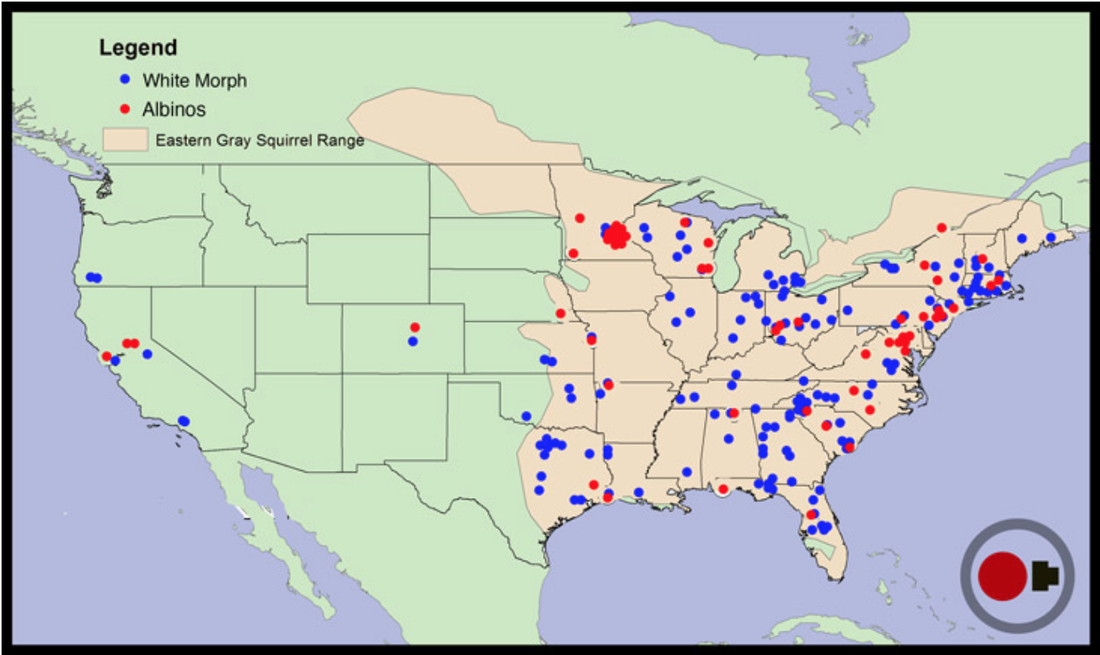By Associated Press
Published: Dec. 28, 2021
HONOLULU (AP) — Billionaire Facebook founder Mark Zuckerberg has purchased more property in Hawaii, including most of a reservoir that unleashed a deadly flood 15 years ago.
Property records show Zuckerberg’s Kaloko LLC bought a 110-acre site on Kauai last month for $17 million from a company owned by the Pflueger family, the Honolulu Star-Advertiser reported.
The purchase includes most of a reservoir that flooded in 2006, killing seven people, after a section of a dam burst following 40 days of near-constant rain. James Pflueger was held responsible for the tragedy for his management of the dam.
Pflueger was sentenced by a state judge to seven months in jail in 2014 and was released in 2015. He died in 2017 at the age of 91
Zuckerberg and wife Priscilla Chang are committed to doing their part of fulfilling legal requirements and promoting safety of the reservoir, said Ben LaBolt, a spokesman for the couple.
The reservoir remains unrepaired and on the state’s list of high-risk dams.
The couple plan to extend farming, ranching, conservation and wildlife protection work on the land, LaBolt said. They already had 1,300 acres (526 hectares) on the island.
Copyright 2021 The Associated Press. All rights reserved
Mark Zuckerberg adds 110 acres to controversial 1,500-acre Hawaii estate
The $17m purchase for the Facebook founder includes the Ka Loko reservoir, considered high-risk and in need of repairs
Maya Yang
Tue 28 Dec 2021

Mark Zuckerberg has added 110 acres to his controversial 1,500-acre estate in Kauai, Hawaii, dropping $17m for the purchase.
The 110 acres of land that the Facebook founder and his wife recently bought includes the Ka Loko reservoir, a century-old reservoir whose dam broke in 2006 and released 400m gallons of water that killed seven people on Kauai’s north shore.
According to the couple’s spokesperson Ben Labolt, the reservoir is considered high-risk and has not been repaired. The Zuckerbergs are committed to fulfilling the legal requirements surrounding the reservoir, Labolt told Business Insider.
“Mark and Priscilla continue to make their home at Ko’olau Ranch,” Labolt said. He added that they had “worked closely with a number of community partners to operate a working ranch, promote conservation, produce sustainable agriculture and protect wildlife and look forward to expanding their efforts to include this additional property”.
Zuckerberg’s recent purchase comes after two previous acquisitions - a $100m 750-acre purchase made in late 2014 and a $53m 600-acre purchase made in March that includes a public beach and working cattle ranch.
Zuckerberg’s massive estate has met with criticism and controversy in the past. In 2016, Zuckerberg angered neighbors when he constructed a 6ft stone wall around his property that blocked easy access to Pila’a Beach, in an attempt to decrease highway and road noise.

Pila’a Beach, center, shown in 2017, sits below hillside and ridgetop land owned by Facebook CEO Mark Zuckerberg on the north shore of Kauai in Hawaii.
Photograph: Ron Kosen/AP
Then in early 2017, Zuckerberg’s lawyers filed lawsuits against hundreds of local Hawaiians who may own an interest in small pockets within his estate’s boundaries. The “quiet title” suits are used to clarify the often complicated history of land ownership in the state and can often force owners to auction off their lands. In certain cases, defendants are even required to pay the legal fees of the plaintiff – in this case, the world’s fifth richest man.
“This is the face of neocolonialism,” said Kapua Sproat, a law professor at the University of Hawaii to the Guardian in 2017. “Even though a forced sale may not physically displace people, it’s the last nail in the coffin of separating us from the land.”
“For us, as native Hawaiians, the land is an ancestor. It’s a grandparent … You just don’t sell your grandmother,” Sproat added.
Zuckerberg eventually dropped the suit, saying that he and his wife wanted to “make this right, talk with the community, and find a better approach”. The pockets of land were eventually sold at an auction.
Along with his Hawaii estate, Zuckerberg owns a total of roughly 1,400 acres and 10 houses in Palo Alto, San Francisco and Lake Tahoe, amounting to a $320m real estate portfolio.

By Ben Marcus
Facebook founder linked to land that, in a roundabout way, brought the surf industry to its knees in 2006.
The world’s fifth-richest man and BFF of world’s first best waterman Kai Lenny, Mark Zuckerberg, has dramatically increased his landholdings in Hawaii, buying a 110-acre site on Kauai for $17 million from a company owned by the Pflueger family.
The purchase, reports KITV, “includes most of a reservoir that broke in 2006 and killed seven people. James Pflueger was held responsible for the tragedy for his management of the dam, a section of which burst following 40 days of near constant rain. Pflueger was sentenced by a state judge to seven months in jail in 2014 and was released in 2015. He died in 2017 at the age of 91.
“Zuckerberg and wife Priscilla Chang are committed to doing their part of fulfilling legal requirements and promoting safety of the reservoir, said Ben LaBolt, a spokesman for the couple.
“The reservoir remains unrepaired and on the state’s list of high-risk dams.
“The couple plan to extend farming, ranching, conservation and wildlife protection work on the land, LaBolt said. They already had 1,300 acres (526 hectares) on the island.”
So what?
So nothing!
So what we have here is six degrees of surf adjacency: Facebook founder Mark Zuckerberg and his wife Priscilla Chan are paying $17 million for the land that includes a reservoir that collapsed in 2006 that killed seven people and led to a tsunami-sized lawsuit that was one of the factors to inspire Grubby Clark to sell Clark Foam.
Too much?
Let’s back up.
According to Tsunami from the Mountain Crashes Through Kauai Town by Malia Zimmerman in The Hawaii Report for March 15, 2006:
Devastated — that is how residents in Kilauea on Kauai’s North Shore said they felt early Tuesday after a 70-foot high, 200-foot wide “tsunami” wave that sounded like thunder, came crashing down from the mountain around 5 a.m., washing through homes and dragging between three and eight people away.
The “thunder,” which residents say kept getting louder until they could hear nothing else, was actually more than 300 million gallons [20 Surf Ranches] of fresh water that raced toward the tiny beachside community from the mountain after several weeks of heavy rain caused the 116-year-old Kaloko Dam to breach its earth barrier.
A man was swept out to sea by what became a raging river — his body was found around noon in the river mouth leading to the ocean, according to the State Adjunct General Robert Lee. Between two and seven other people still are reported missing.
To be fair, the rainstorm that collapsed the dam was a then-Biblical, now legendary 40 days and 40 nights of rain that people still talk about in hushed tones.
An historic deluge.
In the end, eight or more homes were destroyed and seven people were killed, including Aurora Solveig Fehring, her husband Alan Gareth Dingwall, and their two-year-old son, Rowan Grey Makana Fehring-Dingwall. Christina Michelle McNees, who was seven months pregnant. Daniel Jay Arroyo, her fiancé who she was set to marry just hours later, also died along with Timothy Wendell Noonan, Jr., a friend of the Fehrings, and Carl Wayne Rotstein, the Fehring’s caretaker and business partner.
Zimmerman further reported:
According to numerous media reports and public record, Pflueger has a long history of manipulating the land on his North Shore property, which caused the state to pursue a criminal case against him, and area residents to sue him civilly for subsequent damage to their property.
Pflueger, 79, received the largest fine in state history for an environmental case, and one of the largest criminal fines ever in U.S history, when the 5th Circuit Court on Kauai ruled he knowingly violated water pollution laws and committed 10 felonies.
Pflueger also was ordered to pay $7.5 million in penalties for construction he initiated without proper Clean Water Act permits, including $2 million to the state and federal government, $5.3 million to stop further erosion to the land and for stream restoration and $200,000 to replace area cesspools. The repair to the environment was supposed to be completed by 2007.
Righteous bucks!
Pflueger dicking around with nature flooded property and wrecked a reef which is a huge no-no in Hawaii.
He was also held responsible for the dam breach.
According to (a fact-checked) Wikipedia:
The owner of the dam (James Pflueger) performed grading operations near the dam without permits and may have filled in the emergency spillway for the dam. Neither the current nor prior owners of the dam maintained the dam adequately. Finally, the County of Kauai knew about the unpermitted grading operation, but did not enforce a stop-work order.
On November 21, 2008, James Pflueger was indicted for manslaughter and reckless endangerment in relation to the dam failure. Pflueger’s lawyer claimed that the indictment was an attempt by the state of Hawaii to deflect its own responsibility in the matter.
On August 4, 2009, it was reported that a settlement between the parties of all civil cases has been agreed upon, pending judicial review. On July 17, 2013, Pflueger entered a plea of no contest to reckless endangering in a deal with prosecutors. In exchange for the plea, state prosecutors agreed to drop seven manslaughter counts.
The story goes on and on, with many twists and turns.
According to Pflueger Defaults on Settlement for Victims of His Ka Loko Dam Breach by Malia Zimmerman in Hawaii Reporter for September 9, 2011:
The civil suits were settled for an estimated $25 million in 2009, with another possible $25 million from an insurance company. Pflueger chose not to pay that settlement by the September 1, 2009 deadline: “Pflueger’s attorneys have told attorneys for the victims that Pfleuger does not have the money to pay his share of the undisclosed civil settlement, and that he would like a 2-year extension.”
The victims put a lien on the property, which included more than 384 acres along Pilaa Bay. But that property already had a $5,000,000 lien on it filed by Pflueger’s own family trust and another $4,000,000 lien from 2001 when Pflueger’s extensive illegal grading activities on the Pilaa property flowed 1,000 tons of mud into neighboring homes and properties and into once-pristine Pilaa Bay.
Is this why Hawaiians sometimes don’t like the haole? Maybe.
Oh what a tangled web that runs amok, when with nature we try to…
The Pflueger saga goes on and on with suits and countersuits and millions of dollars flying around like fruit bats.
So what?
So it was Pflueger getting his okole sued off by multiple parties for tens of millions of dollars that was at least partially responsible for Gordon Clark declaring *Blank Monday and closing Clark Foam without warning on December 5, 2006.
Grubby was worried about lawsuits from employees who had been cancerized by exposure to all those toxic chemicals and especially something called TDI that could have caused a Bhopal-class disaster in the once-vacant and deserty Orange County that had sprouted up around Clark’s formerly isolated factory.
And that’s why you’re still getting used to epoxy.
In a story called Blank Monday in The New Yorker for August 21, 2006 by surfing’s own Pulitzer-prize winning Bill Finnegan, we find the final piece of the puzzle that links mudslides to Clark Foam to Zuckerberg:
Then in the summer of 2005, Clark took a trip to China.
When he returned, he spoke to Luis Barajas, his wood-mill foreman. “He said, ‘Luis, they got us. They build an Orange County every couple of days,” Barajas told me.
Not long afterward, according to friends, Clark was in Hawaii, dirt-biking with Jimmy Pflueger, who is something of a local magnate on Kauai. During a break, Pflueger told Clark a story. He had got into trouble with the state and the E.P.A over some grading he’d done without a permit. There had been a rainstorm and a mudslide and a lot of dirt had ended up on a coral reef. The state fined him four million dollars.
The worst part, though, Pfleuer said, was the way the government calculated some fines, compounding sums daily by a formula that, given time, could break the Federal Reserve.
Clark flew back to California. He brooded all weekend, according to a friend. On Monday morning, December 5th, he went into Clark Foam and approached the first worker he saw pouring foam into a mold.
“That’s it,” he said. “That’s the last foam we pour.”
So what?
So that Kauai property with bad voodoo circling it like bats from a belfry, the property that flooded the reef and killed seven people and put a septuagenarian in prison for sept months and cost him millions which he may or may not have paid and inspired Grubby Clark to pull the plug, now belongs to Mark Zuckerberg.
This latest buy is Zuckerberg’s second for 2021.
In March, Zuck paid $53 mill for 600 acres of prime Kauai land included a public beach and a working cattle ranch, this on top of the 750 acres he bought in 2014.
Which could be good as Zuckerberg has way too much money and is way too high profile and too careful to ever flood a reef or drown people and get his ears sued into the stratosphere.
And Zuckerberg has the money to do right by that reservoir, and restore it to whatever nature intended.
And if Zuckerberg really wants to be a good neighbor he should turn some of that land into a working cattle ranch.
Hawaiians love cowboy work, boy howdy, whether it’s working from horses or throwing hay one-handed, two bales at a time, which they can surely do.
Even swimming cattle out off the beach to waiting boats, which they did a hundred years ago.
Hawaiians are natural cowboys and if Zuckerberg made some of that land into cattle land, and offered real paniolo jobs and riding opportunities to the kama’aina, they would love him.


















